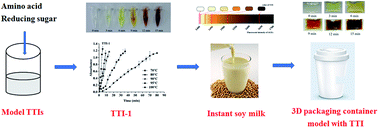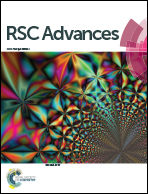Development of a novel Maillard reaction-based time–temperature indicator for monitoring the fluorescent AGE content in reheated foods
Abstract
Dietary advanced glycation end products (AGEs) are formed via the Maillard reaction in foods, especially in reheated foods, and can cause chronic diseases. In this study, a series of Maillard reaction-based time–temperature indicators (TTIs: TTI-1, TTI-2, and TTI-3) were developed with lysine and xylose for monitoring the dynamic formation of fluorescent AGEs in reheated foods. The discoloration kinetics of Maillard reaction-based TTIs and the dynamics of fluorescent AGE formation were explored. Formulas were derived to illustrate the relationship of the color change in the TTIs with time and temperature. The activation energies (Ea values) for generating the TTIs were 96.17, 87.98, and 83.55 kJ mol−1, respectively. TTI-1 was the optimal indicator for instant soy milk powder because it showed the lowest activation energy difference in this study. The results show that this series of Maillard reaction-based TTIs can be used to monitor the AGE contents in various reheated foods.



 Please wait while we load your content...
Please wait while we load your content...